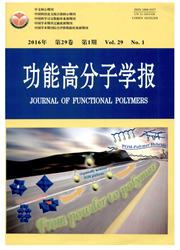

 中文摘要:
中文摘要:
采用创建的一种研究方法,以正丁基锂(n-BuLi)为引发剂,研究了苯乙烯(St)在60°C至140°C下的阴离子本体聚合。结果表明,低温下(〈20°C)以六元缔合结构形式存在的非活性正丁基锂在高温下(≥60°C)会转化为活性种。随机分布在该六元结构上的平均1.3个离子对可以引发St的阴离子聚合。然而从六元缔合结构上增长出的超分子聚合物线团又将阻碍单体继续扩散进入离子对参与聚合,从而产生一个持续时间较长的聚合转化率停滞平台(SCP)。由于时温等效作用,提高聚合温度可以显著地缩短SCP的持续时间,从而大大地加快聚合速率。SCP后期,缔合的超分子结构在前期聚合累积能量、单体扩散动力以及相分离的共同驱动下将完全地分解为6个独立、相等的聚苯乙烯锂活性链,聚合又将继续,并迅速达到聚合终点。少量极性调节剂四氢呋喃的加入可以明显提高聚合速率,但仅仅只是缩短了SCP的持续时间,并没有改变n-BuLi的缔合结构。
 英文摘要:
英文摘要:
This work presents new insight in the initiating mechanism of the anionic polymerization based on the anionic bulk-polymerization of styrene(St) at the temperature ranging from 60°C to 140 °C.The results revealed that the inactive aggregation of n-butyllithium existing in a hexameric structure at low temperature(20 °C) could be transformed into the active species at high temperature(≥60 °C).It was found that there were 1.3 active positions in average randomly distributed in the hexameric-structure,which could initiate the polymerization of St.The polymer coils in the hexameric-structure could block the diffusion of the monomers into the ion-pairs and result in a stationary-conversion platform(SCP) with a relatively long duration.The increase of temperature seemed to shorten the duration of SCP due to time-temperature equivalence principle,thus accelerating the polymerization significantly.Then,the aggregates were dissociated completely into 6 equal polystyryllithium macromolecules,and the polymerization conti-nued again and completed rapidly.The addition of polar regulator(THF) into the system significantly accelerated the polymerization rate only by shortening SCP,not by changing the aggregation structure of n-butyllithium.
 同期刊论文项目
同期刊论文项目
 同项目期刊论文
同项目期刊论文
 期刊信息
期刊信息
